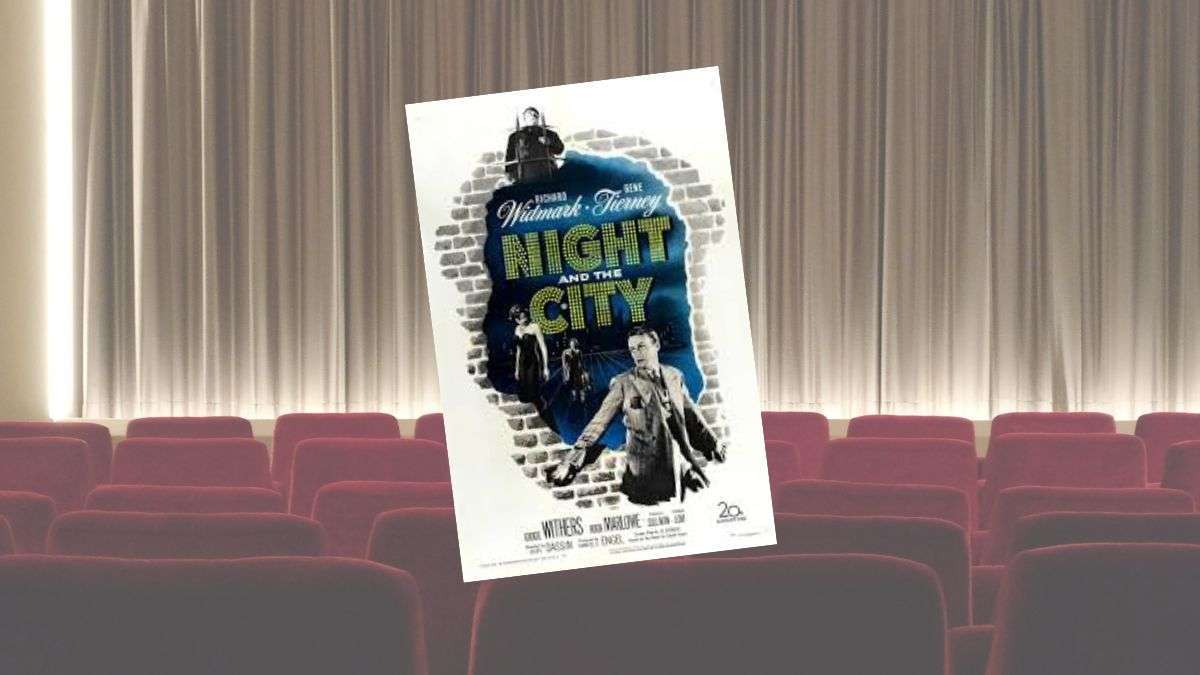Night and The City (1950)
Starring: Richard Widmark, Gene Tierney, Googie Withers, Mike Mazurki
Written by: Gerald Kersh (novel), Jo Eisinger, Austin Dempster
Directed by: Jules Dassin
Film noir and pro wrestling – why don’t the two worlds collide more often? In Night and the City Jules Dassin takes the often under-explored dark underbelly of the wrestling world and fuses it with traditional genre elements such as a claustrophobia-inducing city and an anti-hero doomed to a grim fate.
Dassin had crafted a steady if unremarkable career in America prior to filming Night and the City, which he shot in London after fleeing Hollywood due to accusations of having communist sympathies. The city proved to be a perfect backdrop, bleak and war-torn, for a story that charts the incessant march towards failure of a would-be big-time wrestling promoter.
Richard Widmark (Judgment at Nuremberg, Murder on the Orient Express) plays Fabian, a small-time crook who think he’s found his golden ticket to the good life through world-famous wrestler Gregorius the Great (Stanislaus Zbyszko). His plan to build a wrestling organization around his star depends on his ability to con almost everyone around him in order to have the chips fall his way. From the outset, though, you just know this isn’t going to be his day. Fabian is trapped in as many ways as you can imagine: by the cold, jutting walls of London, by the corners of the wrestling ring, and most inevitably by his own inability to rise above the bottom-feeding status that he occupies.
Night and the City was remade in 1992 with Robert DeNiro and Jessica Lange, but already the remake is suffering from a lack of longevity that the original still maintains. Interestingly, the story was altered to have Fabian chasing the dream of becoming a big-time boxing promoter. There’s certainly reason to presume that in the early 1990s there wasn’t a believable way to present the world of pro wrestling in a dark and sinister fashion with the bright and colorful WWF engrained in the mainstream consciousness.
In reviewing the 1992 version, Roger Ebert offers a criticism by way of a backhanded compliment for the original: “When you remove the heightened visual and dramatic style from the 1950 film — when you tone down the characters to a pallid 1990s realism — you realize how weak the story is. The Dassin film was all atmosphere, all shadows and camera angles and supporting actors who knew how to make their characters into bizarre mutations. Take away the style and the movie just isn’t there anymore.”
Indeed, this is a film loaded to the brink with symbolism, and it utilizes the wrestling world in a fashion seldom seen, but one that is proven instantly to be appropriate.
RELATED LINK
- November 1, 2009: Classic movie Night and the City captured wrestling’s murky fascination




